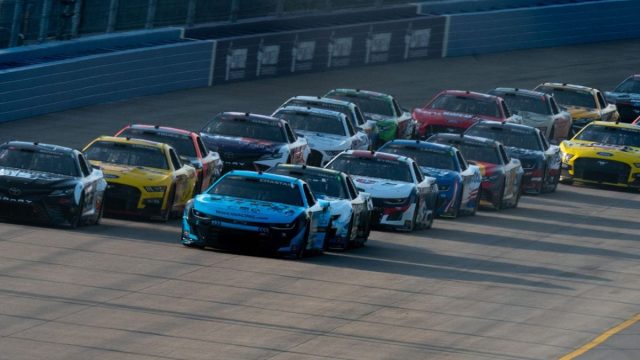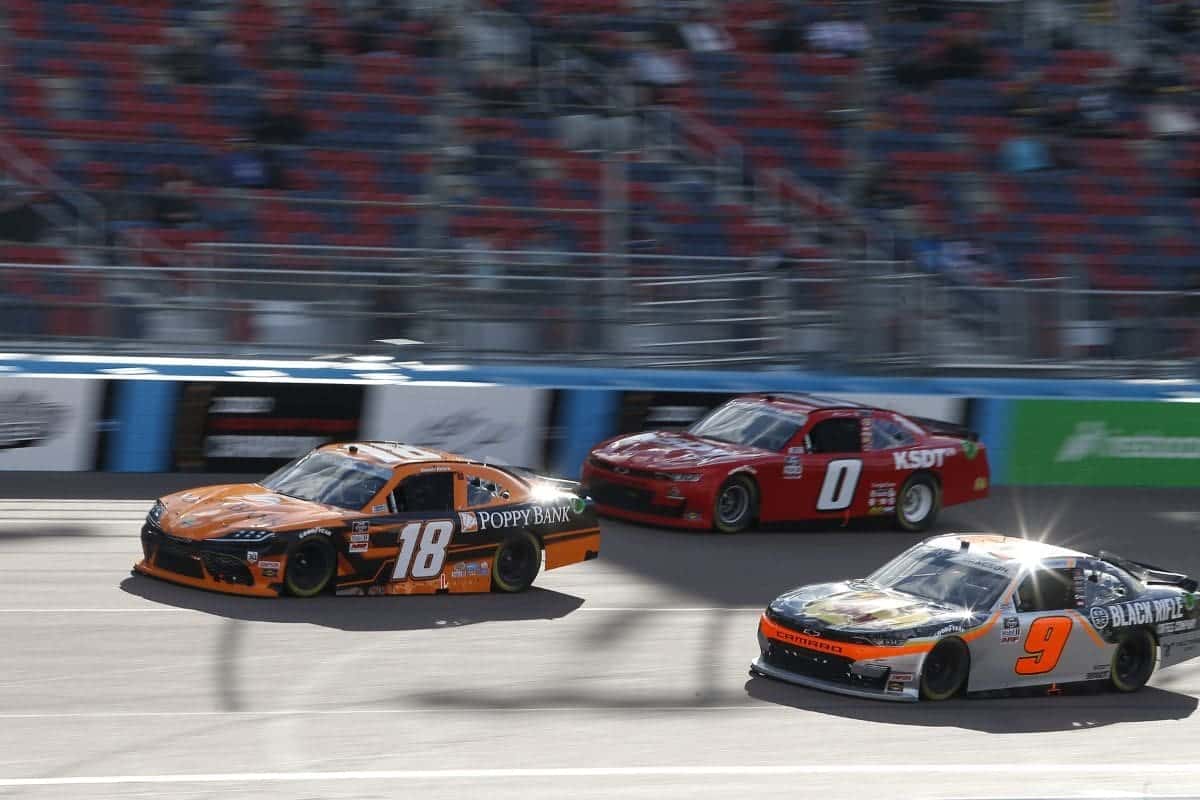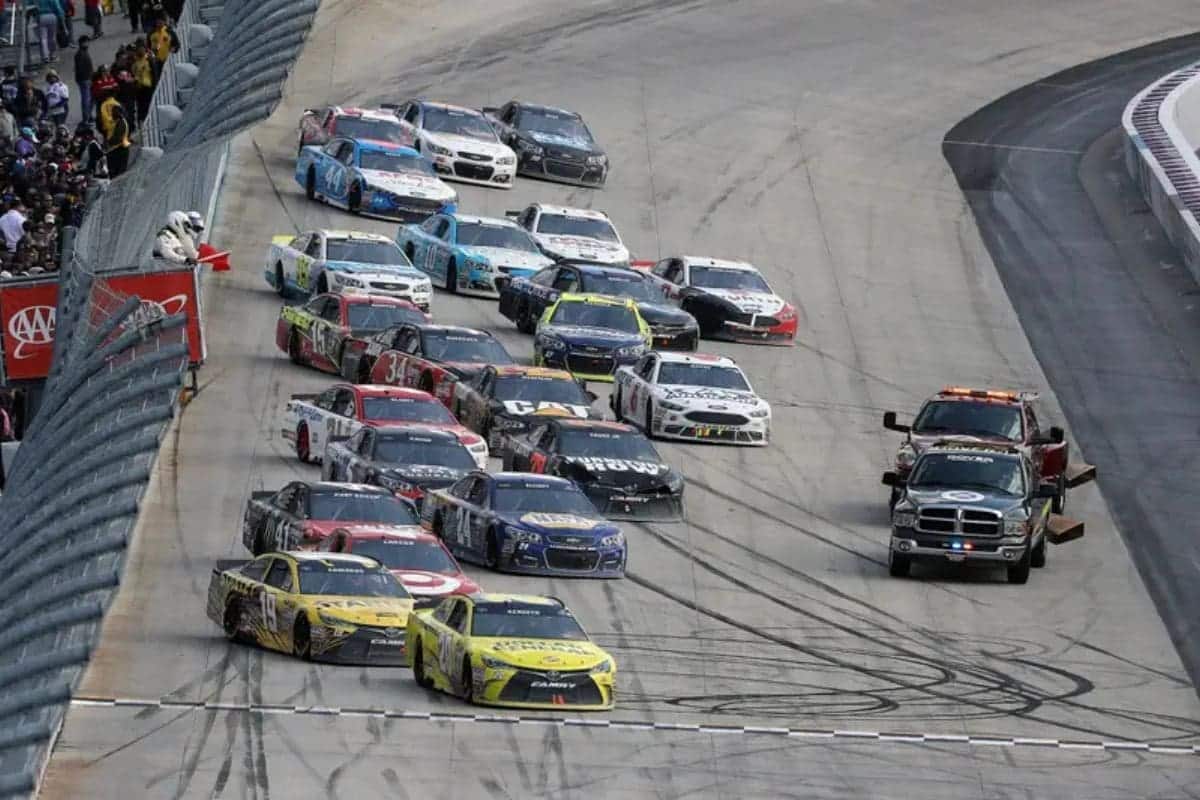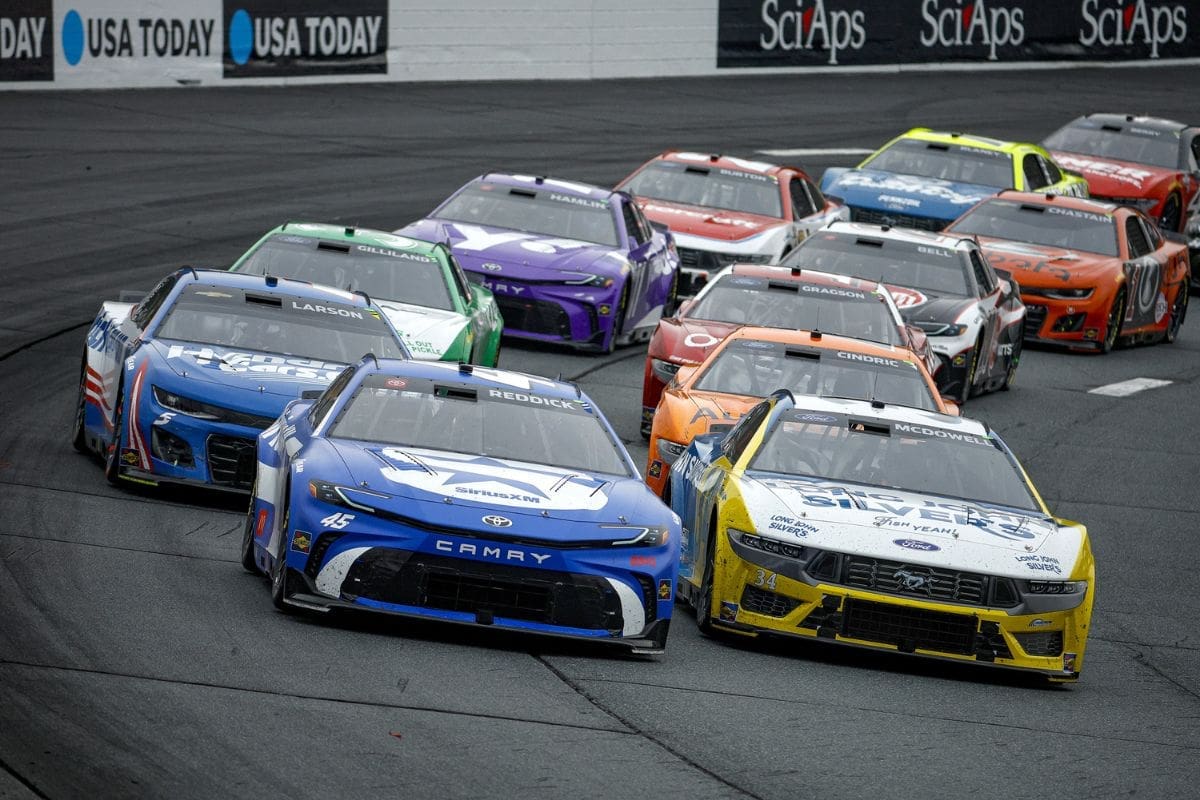NASCAR Nashville Preview: As NASCAR gears up for the Nashville Superspeedway event, the spotlight shifts to the unique challenges posed by its concrete track surface. Unlike its asphalt counterparts, concrete offers unparalleled durability and consistent grip levels, yet demands exceptional tire management due to its propensity for increased wear. Drivers must adeptly tackle the nuances of this unforgiving surface, where vibrations and grip variances can greatly influence race strategies. With successful navigation reliant on strategic pit stops and precise setup adjustments, the true test lies in balancing aggressive driving with caution.
Key Highlights
- Concrete tracks at Nashville Superspeedway demand exceptional tire management due to their abrasive nature.
- Drivers must adapt to inconsistent grip and temperature fluctuations inherent to concrete surfaces.
- Concrete’s durability provides stable track conditions, reducing the need for frequent repaving.
- Teams need precise vehicle tuning to handle vibrations and unevenness on concrete tracks.
- Strategic pit stops are crucial for conserving tire integrity on Nashville’s concrete surface.
Introduction to Concrete vs. Asphalt Surfaces
The Nashville Superspeedway’s concrete surface, unlike the more commonly used asphalt, profoundly influences tire grip, wear patterns, and the holistic vehicle performance, making it a unique challenge for NASCAR drivers and teams. This distinction centers around the core materials used in the construction of the track. Concrete employs Portland cement as a binding agent, creating a more rigid and enduring surface compared to asphalt, which relies on bitumen. The rigidity of concrete results in a surface less susceptible to temperature fluctuations and deformation, thereby offering a more consistent racing experience over time.
One of the primary implications of racing on concrete is the alteration in tire grip. Concrete’s texture is inherently more abrasive than asphalt’s smoother counterpart. This increased abrasiveness can lead to higher tire wear, necessitating more strategic tire management and pit stop planning. The higher grip levels can also translate to increased cornering speeds, but at the cost of heightened tire degradation. Teams must adjust their setups to balance speed with tire longevity.
Additionally, the stiffness of concrete impacts the way vehicles respond to the track surface. Unlike asphalt, which can develop ruts and grooves over time, concrete maintains a more uniform surface. This uniformity can lead to more predictable handling characteristics but also demands precise vehicle tuning to exploit the track’s unique properties. Suspension setups, for instance, might be altered to accommodate the lack of surface give, ensuring the best possible contact between the tires and the track.
Racing Challenges on Concrete Surfaces
Frequently, the sectional slabs of concrete tracks like Nashville Superspeedway introduce vibrations and unevenness that greatly impact grip and handling for NASCAR drivers. These inherent characteristics create unique racing challenges that require both drivers and teams to adapt their strategies and setups.
Throwing out the caution flag for this one ⚠️ pic.twitter.com/ux22bFd8cj
— Sonoma Raceway (@RaceSonoma) December 31, 2023
Vibration and Surface Feedback: The segmented nature of concrete tracks means that drivers are constantly dealing with vibrations as they navigate the circuit. This feedback can be jarring, leading to increased physical fatigue and making it difficult to maintain ideal control over the vehicle. The continuous stress on the car’s suspension system also necessitates more robust setups to withstand the relentless impacts.
Grip Variation: Unlike asphalt, which tends to offer a more uniform level of grip, the grip on concrete can be more inconsistent. Drivers must constantly adjust to sections of the track where grip levels may suddenly change, especially as tire rubber builds up or wears down. This unpredictability can lead to sudden loss of traction, demanding heightened precision and adaptability from the driver.
Tire Wear and Heat Management: Concrete tracks are notorious for their effect on tires. The surface can cause accelerated tire wear, requiring teams to meticulously manage tire usage and pit strategies. Additionally, the heat retention properties of concrete mean that track temperatures can soar, exacerbating tire degradation and posing additional challenges for maintaining ideal performance.
Dale Earnhardt Jr. has pointed out that these issues are not unique to NASCAR, referencing the difficulties faced by IndyCar at Dover, another concrete track. As a result, driver opinions about racing on concrete surfaces remain mixed, highlighting the nuanced and challenging nature of these tracks.
Understanding and mastering these challenges is essential for success at Nashville Superspeedway, making it a compelling battleground for both drivers and teams.
Advantages of Concrete Surfaces
When considering concrete surfaces, it is important to acknowledge both the specific challenges and significant benefits they bring to tracks like Nashville Superspeedway. One of the key advantages is the durability of concrete. In contrast to asphalt, which can deteriorate over time, concrete maintains consistent grip levels for longer periods. This lasting surface integrity means that drivers can anticipate fewer surprises related to track conditions, allowing for more predictable and strategic driving.
Furthermore, the long-lasting nature of concrete surfaces reduces the necessity for frequent repaving. Asphalt tracks often require regular maintenance and resurfacing, which can disrupt racing schedules and lead to fluctuations in track performance. Concrete’s resilience minimizes these disruptions, providing a stable racing environment year after year. This stability is particularly advantageous for teams and drivers who can better plan and set up their vehicles knowing that the track conditions will remain relatively constant.
Another crucial benefit is how concrete responds to temperature changes. Asphalt can soften in high temperatures, resulting in changes in grip and potentially dangerous conditions. In contrast, concrete remains mostly unaffected by temperature fluctuations, offering a more consistent racing surface throughout the year, regardless of weather conditions. This reliability can contribute to safer races, as drivers are less likely to experience unexpected loss of traction.
However, it is important to note that losing grip on a concrete surface can have significant effects due to its inherent characteristics. Drivers must stay alert and adept in managing the unique demands of concrete tracks.
The advantages of durability, reduced maintenance, and consistent performance make concrete surfaces a favorable choice for tracks like Nashville Superspeedway, enhancing the overall racing experience.
Expectations for Racing at Nashville Superspeedway
Anticipation is building among NASCAR enthusiasts and drivers alike as they prepare for the unique challenges presented by Nashville Superspeedway’s concrete surface during this weekend’s races. The 1.33-mile D-shaped oval is set to test the mettle of even the most seasoned drivers, as the inherent characteristics of concrete demand a different approach compared to the more common asphalt tracks.
- Tire Management: Concrete tracks are notorious for their abrasive nature, leading to quicker tire wear. Drivers will need to exercise exceptional tire management skills to maintain competitive lap times throughout the race. Constant vigilance and strategic pit stops will be pivotal in conserving tire integrity.
- Grip and Handling: Unlike asphalt, concrete surfaces offer less grip, especially under changing weather conditions. This can result in cars sliding more, particularly in the corners. Drivers must adapt their driving styles to navigate the track effectively, balancing aggressiveness with caution to avoid costly mistakes.
- Heat Retention: Concrete retains heat differently than asphalt, which can affect the car’s handling characteristics as the race progresses. Teams must fine-tune their setups to account for temperature fluctuations, ensuring their vehicles remain competitive as the track temperature rises and falls.
Driver Performance and Expert Insights
As the racing community prepares for the unique challenges of Nashville Superspeedway, attention turns to the drivers who have historically excelled on concrete tracks, with Kyle Busch standing out for his impressive record of 11 wins at Bristol and Dover. Busch’s mastery over these demanding surfaces is not merely a confirmation of his skill but also a blueprint for success at Nashville. His ability to adapt to the distinctive demands of concrete tracks, which are less forgiving and more abrasive than their asphalt counterparts, could play a vital role in the upcoming race.
Official: Both NASCAR weekends at Bristol in 2024 will be on the concrete. No dirt race at Bristol. Two concrete race weekends. Dates still TBA. @NASCARONFOX pic.twitter.com/zNGhRUp14R
— Bob Pockrass (@bobpockrass) September 15, 2023
Greg Stucker of Goodyear offers valuable insights into the specific strategies that will be employed to ensure a competitive race at Nashville. One of the key adjustments involves rubbering-in the track surface using added resin. This technique is crucial for creating multiple racing grooves, thereby enhancing the opportunities for overtaking and strategic maneuvers. Stucker emphasizes that this preparation is not just a technical necessity but a strategic imperative, aimed at maximizing the performance potential of the drivers and their vehicles.
The interplay between driver prowess and track conditions will be particularly fascinating to observe. While Busch’s record positions him as a formidable contender, the additional factors introduced by the resin-treated surface could level the playing field, making it vital for all drivers to adapt quickly.
News in Brief: NASCAR Nashville Preview
The upcoming race at Nashville Superspeedway shows the unique complexities of competing on concrete surfaces. With their durability and consistent grip, concrete tracks necessitate precise tire management and strategic adjustments.
The unforgiving nature of the surface demands a balance between aggressiveness and caution, making setup essential for success. As drivers contend with vibrations and grip variances, the race at Nashville promises intense competition and serves as a demonstration of the skill required to master concrete track racing.
ALSO READ: Successful NASCAR Drivers and Teams at Nashville Superspeedway



